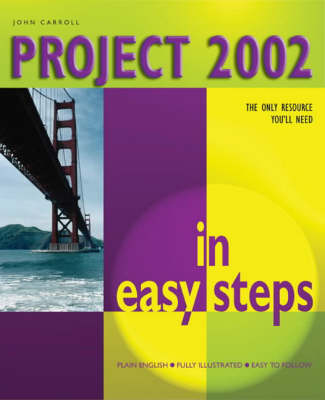In Easy Steps
4 total works
Project Program and Portfolio Management (P3M) represents project management taken to the enterprise level. It is increasingly being recognised as critical to the success of projects in large organizations, such as governments and multinational corporations. Conversely, it is also being recognised that failure to implement it in an organization will often result in a string of poor performing and failed projects. While P3M should therefore be considered critical for large organisations, it can also play a significant part in improving the success and financial payback of projects in any size of business.
Whether you will be commissioning, running, involved in the delivery of, or are just interested in the possibilities that program and portfolio management can bring, Project Program and Portfolio Management in easy steps will give you a good understanding of the subject. The few books that have been published on the subject to date tend to be technical manuals or theoretical text books, rather than hands-on guides. So, if you need to get up to speed on the subject quickly, this book is for you. It will show you how to implement program and/or portfolio management in easy steps and how to get the greatest benefit from using one or both in your organization.
Note from the author:
In case you were wondering why there isn’t a comma after “Project” in the title of the book, it’s because the book doesn’t cover project management, it covers project program management and portfolio management, which are developments from and extensions to project management. A project program refers to a series of projects that are related, and together will achieve a major change in a business. A portfolio refers to the total set of all the projects and programs being carried out in a business at any given time.
Although I have included a chapter on project management, it is not intended to be a complete coverage of the subject. It is only included to establish a baseline from which to compare and contrast program management and portfolio management. For a complete coverage of project management, I would recommend Effective Project Management in easy steps, 2nd edition or Agile Project Management in easy steps, 2nd edition if you are working in an agile project environment.
Project 2013 in easy steps will quickly get you making use of the powerful features of Microsoft’s latest version of this popular project management software. Beginning with first principles, the book sets out the right way to start a project and develop the project plan. It shows you how to break a project down into tasks that can then be scheduled and allocated to resources. These can then be tracked and controlled to completion. It explains the different types of task dependencies and how to use them to make sure things happen when they are needed. For medium to larger projects it shows you how to structure your project for success.
Projects are carried out by people and other resources and this book shows you how to allocate and control the human resources on your project, tracking holidays, vacations and other staff absences. It also shows you how to track other resources and costs so that you can stay in full financial control of your project.
Finally, viewing and communicating information about your project in a timely way to the project stakeholders is also critical to success and this book shows you how to do it in the most effective way.
Project 2013 in easy steps covers the standard and professional versions of the product and how they interface to Project Server and SharePoint server (companion products).



